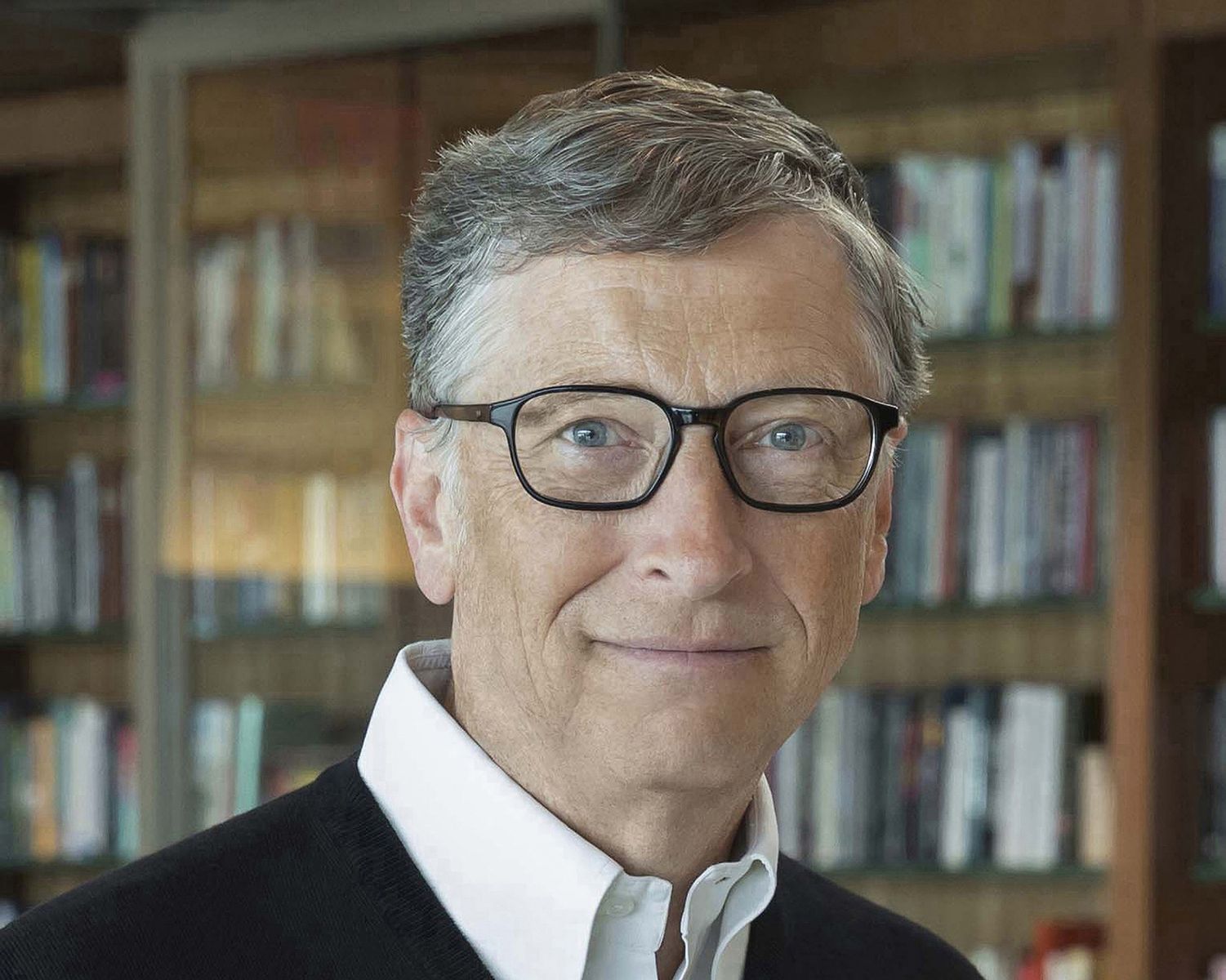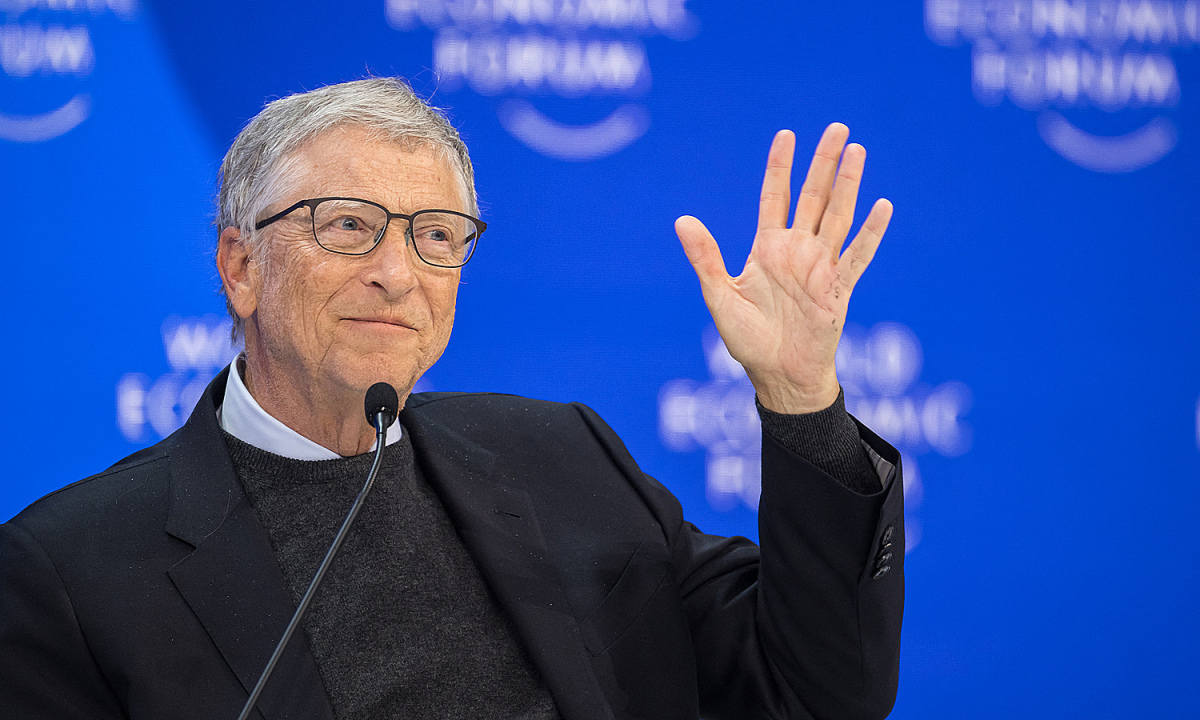Who Is Bill Gates?
Born in 1955, Bill Gates co-founded the tech giant Microsoft with childhood friend Paul Allen, transforming it from a garage startup to a $2.89 trillion enterprise.
Gates, a Seattle native from a middle-class background, was a competitive and academically inclined child who wrote his first software program at thirteen.
This early passion for computing, nurtured by his school’s investment in a computer terminal, led to his and his friends’ venture into programming, including their first company, Traf-O-Data, at seventeen.
Gates went on to attend Harvard College with a focus on Law, Maths, and Computer Science, where he met future Microsoft CEO Steve Ballmer. However, his entrepreneurial spirit and vision for software development led him to drop out of Harvard after two years to pursue his ambitions with Allen.
They first collaborated with MITS to develop software for the Altair 8800, marking the beginning of Microsoft in 1975. The partnership grew rapidly, especially after landing a deal to develop MS-DOS for IBM’s first personal computer.
Microsoft’s success continued with the launch of Windows OS in 1985, eventually leading Gates to step down as CEO but remain in an advisory role.
Transitioning from tech mogul to philanthropist, Gates has significantly reduced his role at Microsoft since 2006 to focus on philanthropy. Through the Bill & Melinda Gates Foundation, established in 2000, he has disbursed $71.4 billion in grants towards various global challenges, including climate change, education, and healthcare.
Gates is also known for his passion for reading and his collection of rare books, highlighting his diverse interests beyond the tech world.
What is Bill Gates Leadership Style?
Bill Gates’ style of leadership might be categorised as one focused on intellectual rigour, the importance of competition, and thinking outside the box.
His early interest in computer languages and programming led him to employ cunning tricks and subterfuge to get to where he needed to be, without crossing the line and doing anything illegal of course.

This willingness to get his hands dirty allowed Gates to make some challenging decisions in a viciously competitive field.
If we were to break down what defines Bill Gates as a leader into just five components, this is how we’d characterise his unique approach:
Visionary and Strategic Thinking
Gates is known for his ability to foresee future trends, particularly in technology. His vision for the role of personal computers and software in every home and office guided Microsoft’s strategy, driving innovation and industry leadership.
In 1975, when Microsoft was founded, there were only a handful of personal computers in private ownership. By 1980, due to Gates and other pioneers’ innovations, there were around two million. Ten years later, that figure had reached fifty-four million, swelling to over 168 million by the year 2000.
Intellectual Rigour and Continuous Learning
Gates exemplifies a commitment to continuous learning and intellectual growth. His deep curiosity and passion for knowledge have allowed him to tackle complex challenges both in technology and philanthropy.
The Bill and Melinda Gates Foundation continues to exemplify his focus on the importance of education and learning. Around 17% of their funding has gone to higher education programmes, amounting to around $11.6 billion disbursed to more than 471 universities in 66 countries.
Competitive and Results-Oriented
Throughout his career at Microsoft, Gates was known for his competitive nature. This trait pushed the company to achieve ambitious standards and often dominate its market sectors.
Gates was not above a little trickery in his approach to securing business early on. This is best exemplified by Microsoft’s leadership style and aggressive approach to securing a contract to provide the operating system for IBM’s first personal computer.
Microsoft, which did not have an operating system at the time, acquired QDOS (“Quick and Dirty Operating System”) from Seattle Computer Products and adapted it for IBM’s PC. This operating system, later named MS-DOS, became the foundation of Microsoft’s success in the software industry. The gamble paid off, in other words.
Adaptability and Flexibility
Gates demonstrated adaptability by transitioning from leading a tech giant to focusing on global health and development through his philanthropic work. This shift showed his ability to apply his skills and resources to a completely different set of global challenges.
He sees the processes involved in developing tech products as like the processes one might follow to solve a societal problem. Both activities require stakeholders to identify root causes, acquire data, posit and test different hypotheses, and then apply the most appropriate solution.
Philanthropic and Data-Driven Approach
In his philanthropic endeavours, Gates applies a data-driven approach to solving large-scale global issues. He is known for using wealth and influence to address critical areas like health, education, and poverty, emphasising measurable results and impact.
Gates has been one of the inspirations for the Effective Altruism movement, as favoured by William MacAskill, Toby Ord, Sam Harris, and others. This philosophical approach to giving focuses on data-driven evidence, favouring solutions that do the most good for the money available.
The above five components collectively portray a leader who is not only adept at foreseeing and driving technological advancements but also deeply committed to leveraging resources and knowledge for the good of society.
Bill Gates Leadership Qualities
There are numerous aspects to Bill Gates’ leadership style that bear closer examination. Let’s talk through each of them in turn.
Visionary Leadership
Gates is often described as a visionary leader. He had the foresight to recognise the potential of personal computing early on and worked relentlessly to make it a reality. His vision for technology’s role in society has guided Microsoft’s strategy and innovation for decades.
Intellectual Rigour and Continuous Learning
Gates is known for his intellectual curiosity and commitment to learning. He is a voracious reader, constantly absorbing information on a wide range of subjects.
This habit of continuous learning has enabled him to stay ahead in the rapidly evolving tech industry and to tackle complex global health and development issues through his foundation.

Passionate and Hands-On
Especially in the early years of Microsoft, Gates was known for his hands-on approach and was involved in various aspects of the company’s operations, from programming to product development. His passion for technology and detail-oriented nature were instrumental in Microsoft’s product excellence.
Competitive and Driven
Gates’ competitive spirit has been a defining characteristic of his leadership. He created a culture of competition at Microsoft.
While some argue this led to innovation and market dominance it also meant that the company was facing legal challenges around some of their more monopolistic practices. In the 1990s the company faced a corporate antitrust case, as US regulators felt they had acquired an unfair monopoly over the personal computer market.
Adaptability and Flexibility
Throughout his career, Gates has demonstrated the ability to adapt and evolve. His shift from the tech industry to philanthropy is a prime example of his flexibility in pursuing new challenges and leveraging his skills and resources for broader societal impact.
Long-Term Orientation
Gates often thinks in long time horizons, both in business and philanthropy. This long-term perspective has allowed him to undertake initiatives that require sustained effort and commitment, such as eradicating diseases or improving global education.
Philanthropic Leadership
In his philanthropic endeavours, Gates exemplifies a data-driven and results-oriented approach. He applies the same rigour and analytical thinking to solving global issues as he did to running Microsoft.
Collaborative Approach
In both his business and philanthropic efforts, Gates recognises the importance of collaboration. He actively seeks partnerships with governments, other nonprofits, and the private sector to achieve greater goals.
Even in his earliest days, Gates was partnering with both his fellow programmers, and companies like IBM and Honeywell. That said, he always kept an eye on opportunities to break away from established partners and forge his own path.
Strategic Use of Wealth for Social Good
Gates has been a pioneer in leveraging personal wealth for philanthropic purposes. He co-founded The Giving Pledge with Warren Buffett, encouraging billionaires to commit much of their wealth to philanthropic causes.
His own Foundation continues to disburse billions of dollars of his personal wealth in strategic aid to charitable causes both in the US and overseas.
Empathy and Social Responsibility
In recent years, Gates has increasingly focused on global health and development, demonstrating empathetic management and responsibility towards the less privileged and a commitment to using his resources and influence to improve global conditions.
Bill Gates’ leadership style is a blend of intellectual rigour, visionary thinking, competitive drive, and a deep commitment to societal betterment. His transition from a celebrated tech entrepreneur to a global philanthropist reflects the evolution of his leadership priorities and style over time.












Replies to This Discussion